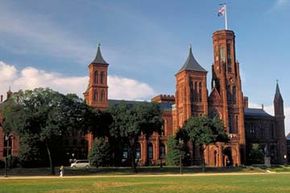The people at the Smithsonian Institution do nothing halfway. So when they boast of being the world's largest museum complex and research organization, they have some pretty impressive stats to prove it. As of 2009, the Smithsonian's vast collections encompassed some 137 million artifacts, objects, artworks and specimens. Interestingly, the huge majority of those are all part of the massive scientific collections amassed by the National Museum of Natural History -- to the tune of more than 126 million [source: Smithsonian Institution].
Sadly, though, even the most avid visitors won't see anything close to that number of national relics in their lifetimes; although the Smithsonian Institution encompasses 19 museums and galleries (and one zoo, of course -- that's about 1,800 animals) it can fit less than 2 percent of its immense holdings into exhibits at any one time [source: Smithsonian Institution]. Most resides in storage and isn't accessible to the general public, although it's an initiative of the current Smithsonian leadership to create an online digital archive of all 137 million items so that anyone can browse at will.
Advertisement
Most of what the Smithsonian acquires comes by way of donations, although only a small portion of the plethora of proffered objects is actually accepted. Staff at the Institution evaluates items carefully to determine if they truly enhance existing collections -- and are worth preserving for future generations -- which can be a very challenging task. But the quest to document all the important aspects of American life (and pretty much everything else) continues. You can read about some of the odder cultural relics that have been collected over the years in 5 Strange Things in the Smithsonian's Collection.
Despite the fact that the Smithsonian Institution is decidedly American, it was founded by a British scientist who had never set foot in the country, nor, apparently, had any American acquaintances. Even his personal opinion and knowledge of the nation are largely unknown. On the next page, we'll find out how this unlikely sounding scenario led to the founding of one of the most important repositories of knowledge and culture on the planet.
Advertisement


